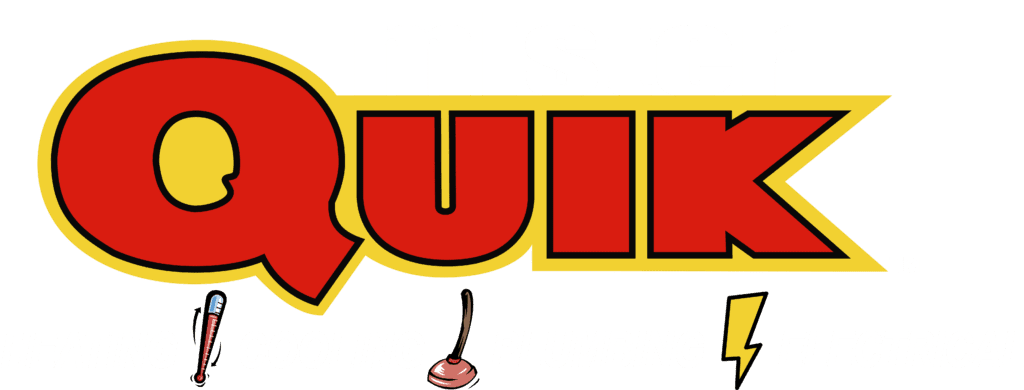Avon No Water in House Suddenly

Water Not Running in House
When you turn on the tap and nothing comes out, it can be a frustrating experience. However, there are several steps you can take to troubleshoot the issue before calling for professional help.
- Check other faucets: Test multiple faucets in your home to determine if the issue is isolated to one fixture or affecting the entire house. This can help narrow down the cause of the problem.
- Inspect the main water valve: Locate the main water shut-off valve in your home and ensure it is fully open. Sometimes, the valve may have been accidentally turned off, leading to a lack of water flow throughout the house.
- Examine the water meter: Take a look at your water meter to see if it indicates any signs of water flow. If the meter is not moving when you know water should be running, there may be a blockage or issue with the supply line.
- Check for leaks or bursts: Inspect visible pipes for any signs of leaks or bursts. Even a small leak can significantly reduce water pressure throughout your home. If you notice any leaks, it’s essential to address them promptly to prevent further damage.
- Test the pressure relief valve: If you have a hot water heater, test the pressure relief valve to ensure it is functioning correctly. A malfunctioning valve can lead to a buildup of pressure in the system, resulting in decreased water flow.
- Inspect the water softener: If you have a water softener system, check to see if it is functioning correctly. A malfunctioning water softener can lead to reduced water flow and pressure throughout the house.
- Look for frozen pipes: In colder climates, frozen pipes are a common cause of water not running in the house. Check for signs of freezing, such as bulging or frost on the pipes. If you suspect frozen pipes, it’s crucial to thaw them out carefully to avoid bursting.
- Test the pressure regulator: If your home is equipped with a pressure regulator, test it to ensure it is operating within the recommended range. A faulty pressure regulator can lead to fluctuating water pressure and flow issues.
- Contact a professional plumber: If you’ve tried the above steps and still can’t determine the cause of the problem, it may be time to call in a professional plumber. A licensed plumber will have the expertise and tools necessary to diagnose and repair the issue quickly and effectively.
Remember, dealing with water flow issues in your home can be challenging, but with the right approach and assistance from professionals like Mister Quik Home Services in Avon, you can get your water running smoothly again in no time.
Water Outage Near Me
Experiencing a water outage in your vicinity can be concerning, but understanding what to expect and how to respond can alleviate stress. Here’s a comprehensive guide to navigating a water outage near you:
Start by determining the scope of the water outage. Check with neighbors or consult local news sources to see if the outage is widespread or localized to your area. This information can help you gauge the severity and potential duration of the outage.
Reach out to your water service provider to report the outage and inquire about the cause and estimated restoration time. They may provide updates or guidance on how to proceed during the outage.
In anticipation of a prolonged outage, conserve water by limiting usage. Avoid unnecessary flushing of toilets, running dishwashers or washing machines, and taking long showers. Use stored water for essential tasks like drinking, cooking, and personal hygiene.
Ensure you have adequate emergency supplies on hand, including bottled water, non-perishable food items, and essential hygiene products. Having these supplies readily available can help you weather the outage comfortably until water service is restored.
If there is no water in the house, it is essential to identify the cause of the issue. Check if there are any disruptions in the water supply from the municipal source, and contact the water utility company for information. If the problem is internal, such as a burst pipe or plumbing issue, turn off the main water supply valve to prevent further damage and leaks. Inspect for visible leaks and, if comfortable, attempt to address minor plumbing problems. If unable to resolve the issue, it is advisable to contact a professional plumber for assistance. In the meantime, conserve any remaining water, consider alternative water sources, and communicate with neighbors to determine if the problem is localized or widespread.
To unclog a house water pipe, start by identifying the location of the blockage. If it’s a sink or shower drain, remove the drain cover and use a plunger to create a strong seal over the drain opening, then vigorously pump up and down to dislodge the obstruction. For more stubborn clogs, a mixture of baking soda and vinegar can be poured down the drain followed by hot water to break down and flush away debris. If the clog is in a toilet, use a plunger as well, ensuring a tight seal and applying firm, rhythmic pressure. In cases where these methods don’t work, a plumbing snake or auger can be employed to physically break up and remove the blockage. If the problem persists, it may be necessary to seek professional plumbing assistance.
Several factors could contribute to your well water suddenly stopping. It may be due to a malfunctioning well pump, a drop in the water table, a blown fuse or tripped circuit breaker affecting the pump’s power supply, a broken well casing, or a clogged well screen. Additionally, extreme weather conditions such as drought or heavy rainfall can impact well water availability. To pinpoint the exact cause, it is recommended to check the well pump and electrical connections, monitor water levels, and inspect the well components for any signs of damage or blockage. If the issue persists, consulting a professional well technician is advisable to diagnose and address the problem effectively.
The time it takes for water pressure to build back up depends on various factors such as the size and capacity of the water supply system, the distance from the water source, and the demand on the system. In a typical residential setting, water pressure can often recover relatively quickly after a brief drop, such as when multiple faucets are used simultaneously. However, if there’s a more significant disruption, like a water main break or pump failure, restoring water pressure may take longer, potentially ranging from a few hours to several days depending on the extent of the issue and the response time of the water utility in addressing the problem
The time it takes to restore running water to your house depends on the cause and severity of the issue. In many cases, plumbers respond promptly to emergencies and work efficiently to restore water supply as soon as possible.
Water Meter Spinning No Water Running
Experiencing a situation where your water meter is spinning, indicating water usage, but there’s no water running in your home can be perplexing. Here’s a detailed guide to help you understand why this might be happening and what steps you can take:


- Check for Internal Leaks: One of the most common reasons for a spinning water meter with no water running is internal leaks within your plumbing system. These leaks can be challenging to detect as they may occur in hidden pipes or fixtures. Look for signs such as dampness, mold, or unusual sounds like dripping water.
- Inspect Toilet Tanks and Faucets: Leaky toilet tanks and faucets are notorious for causing water meter spinning without visible water usage. Check toilet tanks for continuous running or leaking sounds, and inspect faucets for drips or leaks. Even minor leaks can result in significant water waste over time.
- Examine Outdoor Fixtures: Outdoor fixtures like sprinkler systems, hoses, or irrigation lines can also contribute to water meter spinning. Inspect these fixtures for leaks, especially if they have been recently used or if you notice soggy patches in your yard.
- Monitor Water Pressure: Fluctuations in water pressure can cause the water meter to spin even when no water is actively being used in your home. Install a pressure gauge on an outdoor faucet and monitor the pressure to identify any irregularities. High pressure can strain your plumbing system and lead to leaks.
- Check for Meter Malfunction: Occasionally, the water meter itself may be faulty, leading to incorrect readings. Contact your water utility provider to request a meter inspection or replacement if you suspect a malfunction. They can verify the accuracy of the meter and address any issues accordingly.
- Look for Underground Leaks: In some cases, the cause of water meter spinning may be an underground leak in the main water line leading to your property. Look for signs such as unexplained wet patches in your yard, lush vegetation in certain areas, or the sound of running water underground.
- Consider Recent Plumbing Work: If you’ve recently had plumbing work done on your property, it’s possible that a hidden leak or improper installation is causing the water meter to spin. Contact the plumbing service provider to inspect their work and address any potential issues.
- Evaluate Water Consumption Habits: Reflect on your household’s water consumption habits and practices. Are there any changes or activities that could be contributing to increased water usage? Being mindful of water usage can help identify potential causes of the spinning water meter.
By addressing the potential causes outlined above and seeking assistance from professionals like Mister Quik Home Services in Avon, you can effectively resolve the issue of water meter spinning with no water running and ensure the efficient operation of your plumbing system.
Water Valve Open but No Water
Encountering a situation where your water valve is open, but no water is flowing can be puzzling and inconvenient. Here’s a comprehensive guide to help you understand potential reasons behind this issue and steps to resolve it:


Inspect the water valve to ensure it is fully open and not obstructed by debris, sediment, or mineral buildup. Even a small obstruction can restrict water flow significantly. Use a flashlight to examine the valve carefully.


Verify that there are no issues with the main water supply to your property. Contact your water utility provider to inquire about any scheduled maintenance, repairs, or known issues affecting water delivery to your area.



In colder climates, frozen pipes are a common cause of water valves open but no water flow. Check for signs of freezing, such as frost on exposed pipes or bulging in the plumbing system. Thaw out frozen pipes carefully to restore water flow.



If your home is equipped with a pressure regulator, check it to ensure it is functioning correctly. A malfunctioning pressure regulator can lead to inadequate water pressure and flow, even when the water valve is open. Consider consulting a professional plumber to inspect and adjust the regulator if needed.
What to Do When You Have No Water
Experiencing a sudden lack of water in your home can be distressing, but there are steps you can take to address the issue promptly. Here’s a detailed guide on what to do when you have no water:
1. Check with Neighbors: Start by contacting your neighbors to see if they are also experiencing a water outage. This can help determine if the issue is localized to your property or if it’s affecting a broader area. If multiple households are affected, it’s likely a problem with the municipal water supply.
2. Inspect the Water Meter: Locate your home’s water meter and check for any signs of water flow. If the meter is not moving when water should be running, it suggests a blockage or issue within your property’s plumbing system.
3. Verify Main Water Valve: Ensure that the main water valve supplying your home is fully open. Sometimes, the valve may have been accidentally closed, leading to a lack of water flow. Turn the valve clockwise to open it fully and restore water supply.
4. Look for Leaks: Inspect visible pipes, fixtures, and appliances for signs of leaks. Common areas to check include under sinks, around toilets, and near water heaters. Even minor leaks can lead to significant water loss and impact water pressure throughout your home.
5. Thaw Frozen Pipes: If you live in a cold climate and suspect frozen pipes are causing the water outage, take steps to thaw them out safely. Use a hairdryer, heating pad, or space heater to gradually warm the pipes and restore water flow. Avoid using open flames or excessive heat, which can damage the pipes.
Emergency Plumber Near Me
When plumbing disasters strike unexpectedly, having access to a reliable emergency plumber nearby is crucial for prompt resolution. Here’s a comprehensive guide on finding and working with an emergency plumber near you:
Determine the severity of the plumbing emergency. Is it a burst pipe, overflowing toilet, or malfunctioning water heater? Understanding the nature of the problem will help you communicate effectively with the emergency plumber.
Utilize online search engines or directories to find emergency plumbers in your area. Use keywords like "emergency plumber near me" or "24-hour plumbing service" for accurate results. Look for reputable companies with positive reviews and ratings.
Seek recommendations from friends, family, or neighbors who have previously dealt with plumbing emergencies. Personal referrals can provide valuable insights into the reliability and quality of service offered by local plumbers.
Verify that the emergency plumber is licensed, bonded, and insured to perform plumbing services in your area. This ensures that they have the necessary qualifications and expertise to handle the job safely and effectively.
Choose an emergency plumber that offers round-the-clock availability, including evenings, weekends, and holidays. Plumbing emergencies can occur at any time, so it's essential to have access to immediate assistance when needed.
By following these guidelines and working with a reputable emergency plumber like Mister Quik Home Services in Avon, you can have peace of mind knowing that reliable assistance is just a phone call away when plumbing emergencies arise. Prioritize prompt action to mitigate damage and restore the functionality of your plumbing system efficiently.
Troubleshoot Checklist:
- Test other faucets to determine if the issue is isolated.
- Inspect the main water valve to ensure it’s fully open.
- Examine the water meter for signs of water flow.
- Look for leaks or bursts in visible pipes and fixtures.
- Thaw frozen pipes carefully if you suspect freezing.
- Contact the water utility provider to inquire about any outages.
- Verify the functionality of the pressure regulator.
- Check the water softener system for proper operation.
- If unable to identify the issue, contact a professional plumber.
- Prioritize safety and prompt resolution of the problem.






